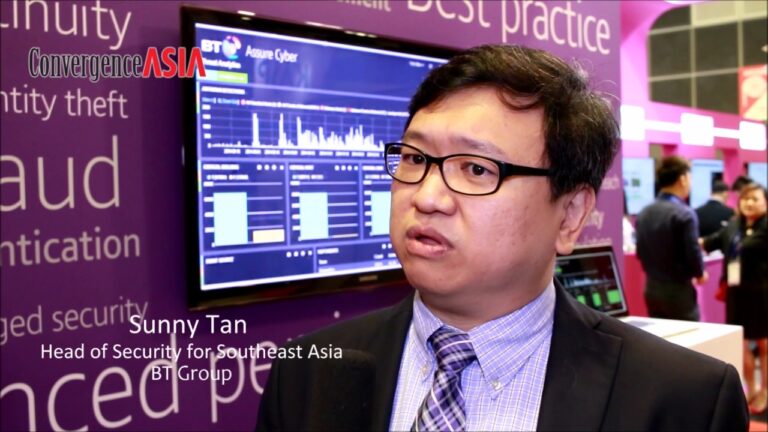By Sunny Tan
In today’s interconnected world, the importance of robust cybersecurity cannot be overstated. With an ever-expanding digital landscape, the role of Chief Information Security Officers (CISOs) has evolved to become pivotal in ensuring the integrity, resilience, and compliance of an organization’s cybersecurity infrastructure.
As guardians of data, privacy, and digital assets, CISOs are at the forefront of shaping the future of cybersecurity governance, effectively bridging the gap between technology and strategic business objectives.
In their strategic role, CISOs are also instrumental in adapting cybersecurity to the evolving digital landscape. This adaptability has proven crucial, as we’ve observed a surge in cloud adoption driven by the pandemic.
According to Gartner, global spending on security and risk management is projected to increase a further 14.3% from US$188.1 billion in 2023 to US$215 billion in 2024; with this attributed to a convergence of factors including cloud vendor price adjustments and an increased uptick in cloud service utilisation. Additionally, the rapid deployment of applications and technologies is occurring at an unprecedented rate, ushering in an era of increased frequency and severity of cybersecurity incidents.
With new threats and attacks, the challenges faced by organisations to safeguard their digital assets have intensified. Moreover, the evolving cybersecurity environment also presents significant challenges to traditional defence mechanisms, continuously prompting organisations to rethink their defence strategies to such a critical extent that discussions have moved beyond the IT department to involve the entire C-suite.
CISOs: The previously overlooked foundation of cyber governance
The C-suite includes varied and interlocking roles that make critical decisions, from CEOs focused on overarching corporate strategy, Chief Financial Officers (CFOs) balancing financial risks, to Chief Marketing Officers (CMOs) leading brand and marketing activations, and Chief Operating Officers (COOs) taking charge of day-to-day processes in a company.
Traditionally relegated to the backdrop of IT operations, the modern CISO does more than that. They take charge of establishing security and governance policies, shaping a proactive cybersecurity strategy that aligns with business objectives. Their role has evolved to become essential in not just risk mitigation and crisis response, but in facilitating digital transformations as well.
To effectively implement security and governance policies to go with a swift crisis response framework, the full support of the C-suite is crucial. Additionally, with increasing compliance requirements for listed companies to have a proper cyber crisis management structure and cybersecurity expertise within their board, the role of a CISO has become more important than ever in guiding the ship through the cyber storm.
Speaking a common language
When CISOs actively contribute to the board’s decision-making process, they play a pivotal role in reducing the risk of miscommunication regarding the organisation’s risk posture. Their focus extends beyond short-term tools and acquisitions, emphasising long-term strategic vision. This is because cybersecurity transcends beyond the mere implementation of tools such as antivirus and firewall software – it is a combination of technology, people, and best practices.
To ensure the CISO’s success in the boardroom, it is important to speak a common language during board dialogues, which are often quantifiable numbers. For CISOs, this means communicating cyber risk exposure with quantifiable data points to provide perspective and common alignment on strategic requirements when implementing cybersecurity initiatives.
Quantifying cybersecurity risk
Quantifying risk holds a pivotal role in the operational framework of any business, extending its reach to assess a spectrum of vulnerabilities beyond financial considerations. The principles of risk quantification are equally applicable when it comes to addressing cybersecurity risks. For CISOs, Cyber Risk Quantification (CRQ) provides quantifiable data points to facilitate decision-making during boardroom discussions, much like other key performance indicators used by different C-suite executives. Just as the CFO presents financial ratios to depict fiscal health, or the COO uses metrics like production efficiency rates, CRQ offers data-driven insights that allow for an objective assessment of cybersecurity posture.
These metrics are indispensable in shaping boardroom decisions on cybersecurity budgets, resource allocation, and even cyber insurance premiums. Additionally, CRQ illuminates security gaps across the organisation’s digital estate, allowing for targeted interventions and improved risk mitigation strategies. In a landscape where cybersecurity is often perceived as a technical issue rather than a business-critical function, CRQ bridges the gap, aligning security measures with organisational objectives and thereby safeguarding the overall health of the enterprise.
Simultaneously, CRQ harmonises cybersecurity with business objectives. It ensures that cybersecurity considerations are not sidelined, but rather are integrated into the strategic conversation on the same level as other critical business functions. This standardisation into measurable units establishes a common language that bridges the gap between technical experts and decision-makers during boardroom discussions, fostering a more holistic approach to organisational strategy and risk management.
CISOs leading unified cyber defence from the boardroom
With the right tools and platforms in place, all CISOs can help enable the seamless exchange of insights-based data and coordinate responses to potential threats. Whether it’s a real-time threat assessment or a discussion about resource allocation, unified communications enable swift and effective decision-making.
For organisations to truly safeguard against emerging cyber threats, CISOs need to be integral players in boardroom discussions. Remember, the key lies in speaking the same language – dollars and cents, the universal currency of risk. By unifying the taxonomy and establishing this shared understanding, organisations can then better align their cybersecurity strategy with their business goals, ensuring a more secure and resilient future.
Sunny Tan is the Head of Security for Southeast Asia, BT Group




